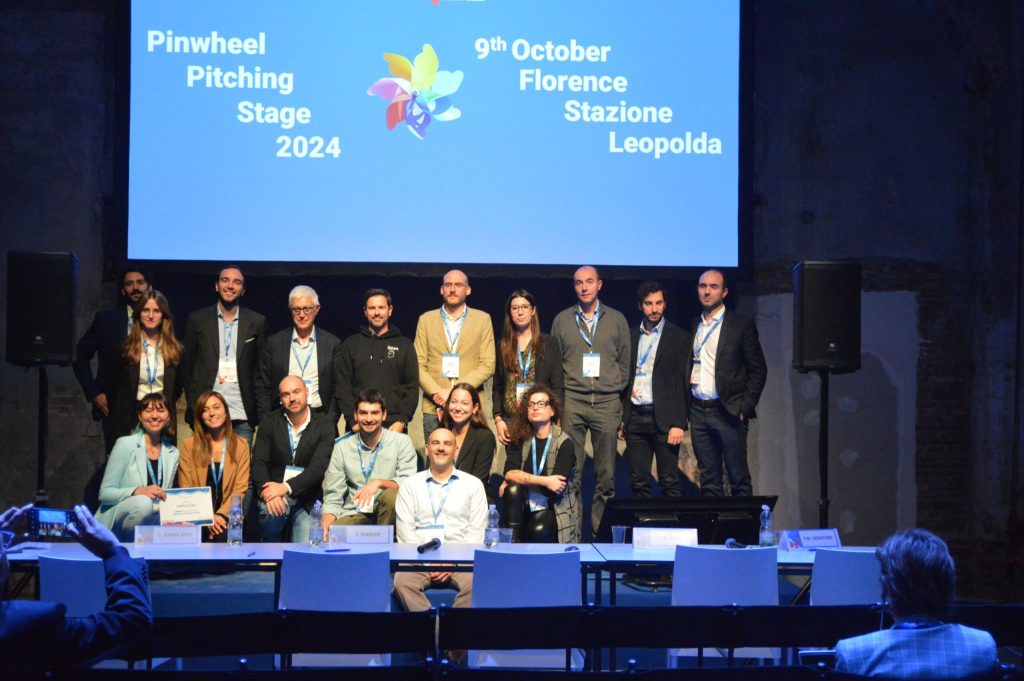Digital Health Blogs partnered with Startup Breeze 2024 to award the most innovative proposals with a special award. The awarded projects, Often Medical and MicroVaxxine, were announced during the Startup Breeze 2024 final on October 9th.

After a short while, we met with Often Medical CTO & Co-founder, Armando Ricciardi. He shared their mission to create a smarter, more efficient healthcare system.
What is Often Medical, and what is its mission?

Often Medical is a spinoff company from the University of Sannio in Benevento. Our mission is to redefine the procedure for placing epidural needles and catheters. The technique is widely used for pain relief, including local regional anaesthesia and epidurals during childbirth. Additionally, it is used to implant spinal cord stimulators for chronic back pain.
What challenges does the current manual technique for epidurals present?
Despite its widespread use, the current technique is completely manual. The doctor uses a syringe to apply intermittent or continuous pressure until they perceive the so-called loss of resistance, indicating the needle has entered the epidural space. This method has a failure rate of up to 30%, as documented in scientific literature, leading to side effects ranging from headaches to serious nerve damage and increased costs for the NHS.
How does Often Medical intend to solve these issues?
We propose an innovative solution based on an optical fibre sensor. We transform a simple optical fibre into a force sensor. When inserted into the needle and connected to an interrogation unit, the fibre detects the force exerted on the needle tip in real-time. Using this method, we can measure objectively what is currently being perceived subjectively by the physician. As needle tip pressure increases, the optical signal increases, and as needle tip pressure decreases, the signal decreases.
Can you describe the results of your recent studies?
We have recently performed a new animal study with our engineered device. The results were excellent—100% success rate. We recorded a video showing the typical trace registered by our system. A specific feature indicates when the needle enters the epidural space. Once the procedure is completed, the needle acts as a guide to insert the catheter into the epidural space. Interestingly, the placement of the catheter can also be accurately monitored thanks to the optical fibre sensors integrated into it. Our technique is now considered the future of obstetric anaesthesia practice by Key Opinion Leaders, as published in the Journal of Clinical Anaesthesia (Burcham HW et al., “Unintentional dural puncture: Looking into the future”. J Clin Anesth. 2023, https://doi.org/10.1016/j.jclinane.2022.111031).
What makes your solution different from the standard of care and competitors?
Our solution transforms a completely passive device into an active one, providing real-time feedback and making the procedure objective. It also allows for data collection for legal or scientific purposes. Unlike many competitors, we use optical fibre technology, which offers high sensitivity and real-time sensation during penetration. Our device is also perfectly compatible with current standard kits, ensuring easy integration.
What is the market potential for your device?
We target two markets: local regional anaesthesia and spinal cord stimulators. The total available market for these applications is similar in global market value, but the numbers differ. Epidurals are very common, with about 3% of the population receiving them annually, while only 100,000 patients currently receive spinal cord stimulators, although the latter is a booming market. We aim to capture 25% of the difficult epidural market and 5% of the spinal cord stimulator market.
What is your business model?
Our business model includes two versions of our device: a high-end version for the spinal stimulator market with high margins and a basic version for placing needles during epidural procedures for local regional anesthesia. We plan to sell directly to large companies, leveraging our device’s compatibility with standard kits.
What funding have you secured so far, and what are your future plans?
So far we have raised $1 million, half from public funding and half from venture capital. We aim to reach the market in three years and need a total investment of $5 million to certify our device as a Class III medical device. In the immediate future, we also plan to launch simplified versions for clinical training and the veterinary market, which do not require certification.
What are your financial projections and exit strategy?
We target sales of 15 million in five years, with positive EBITDA in two years due to high-margin recurrent sales. Our scalable business model supports this growth. While pre-revenue acquisition is rare, we expect to attract interest from major companies in the pain therapy market after achieving sales. We estimate the company value to be about $100 million in five years, based on sales estimated by the discounted cash flow method.



